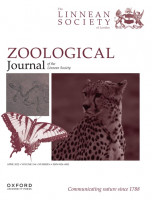Mammals (or properly, mammaliaforms) originated in the Late Triassic and the first 50 Myr of their evolution through Late Triassic and Early Jurassic are best documented by rich faunas from numerous localities around Bristol in south-west England and in South Wales. The mode of preservation of the fossils, in sediment washed into karst features such as caves, is unusual but has led to a demand for specialized processing methods to extract the exquisitely preserved tiny teeth and bones from huge volumes of sediment. This rich documentation of the oldest mammals has made them especially important for mammalian palaeobiology on a global scale. The first specimens were found in the 1860s, and collection and study has been sporadic, with especially fruitful times in the 1860s, and then from 1938–1979. Throughout, the field collecting, processing, and interpretation of the fossils has been fraught, with heated debates between leading protagonists during the second half of the past century. Here, we track the substantial contributions made by Charles Moore, Walter Kühne, Rex Parrington, Kenneth Kermack, Pamela Robinson, and others, using published sources, unpublished letters and notebooks, and interviews, to establish some of the facts about the most heated public disputes.

